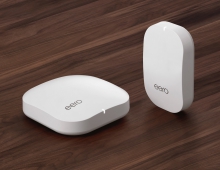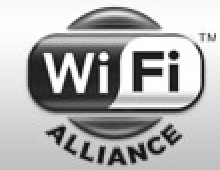
Wi-Fi Bodies to Battle On 60HGz Wireless Technologies
The battle over the 60GHz multi-gigabit wireless technology is heating up as the Wireless Gigabit Alliance (WiGig) allied with the Wi-Fi Alliance to a common standard. On the other hand, the WirelessHD Consortium also today released the WirelessHD 1.1 specification.
The Wireless Gigabit Alliance (WiGig) today published its unified wireless specification and the opening of its Adopter Program. The Wi-Fi Alliance also announced a cooperation with the WiGig on the next generation multi-gigabit wireless networking technology.
The WiGig specification enables high performance wireless data, display and audio applications that supplement the capabilities of today's wireless LAN devices. WiGig tri-band enabled devices, which operate in the 2.4, 5 and 60 GHz bands, will deliver data transfer rates up to 7 Gbps, more than 10 times faster than the highest 802.11n rate while maintaining compatibility with existing Wi-Fi devices. Additionally, the technology was designed to support a multitude of applications on both low power and high performance devices, including consumer electronics, PCs, handheld devices and home networking equipment.
The Wi-Fi Alliance will also cooperate the Wireless Gigabit Alliance (WiGig Alliance) for multi-gigabit wireless networking, by sharing technology specifications supporting Wi-Fi operation in the 60 GHz frequency band.
"On behalf of the WiGig Alliance, I'm extremely proud to announce the publication of the industry's first comprehensive multi-gigabit wireless specification," said Dr. Ali Sadri, WiGig Alliance president and chairman. "WiGig can now provide the world?s leading innovators with a license to develop next-generation wireless products under royalty-free terms. With this announcement today, and with our new partnership with the Wi-Fi Alliance, we are one step closer to fulfilling our vision of a unified 60 GHz ecosystem. We welcome all companies to join with us as we continue to drive the industry forward."
Cisco has also joined the WiGig Alliance Board of Directors, and Harman International, Peraso Technologies and Samsung Electro-Mechanics have also joined WiGig as contributing members.
The new specification announced by WiGig puts some pressure on competing standards groups such as WirelessHD supporters. The WirelessHD Consortium, a competitive 60 GHZ initiative, today announced the immediate availability of the WirelessHD 1.1 specification.
Products implementing WirelessHD 1.1 technology will be backward compatible to those products using WirelessHD 1.0 technology. The new standard handles multi-gigabit data rates for A/V streaming and file transfer (Wireless Personal Area Networking or WPAN) at low link power and increases the data rate to 10 ? 28 Gbps. The new specification will also define common 3D formats and resolutions for WirelessHD-enabled devices, will enable devices to support HD resolution four times beyond that of 1080p and also feature what the WirelessHD Consortium calls 'WPAN Data support': Connected devices that include this feature supports sync?n go file transfers for portable and fixed devices. This specification also provides for IP connectivity for Internet access and networking of WirelessHD devices.
The WirelessHD technology has also been extended to support lossless video streaming in low-power portable devices such as portable media players, netbooks and smartphones.
Last but not least, in addition to DTCP, both the current and future versions of WirelessHD will include support for HDCP 2.0 content protection.
SiBeam and Georgia Tech have already released WirelessHD products for receiving and transmitting video signals. SiBeam today also announced the first dual mode WirelessHD/WiGig RF Transceiver and development kit, encouraging market growth for consumer applications by supporting both the 60 GHz Wireless standards.
The Wi-Fi Alliance will also cooperate the Wireless Gigabit Alliance (WiGig Alliance) for multi-gigabit wireless networking, by sharing technology specifications supporting Wi-Fi operation in the 60 GHz frequency band.
"On behalf of the WiGig Alliance, I'm extremely proud to announce the publication of the industry's first comprehensive multi-gigabit wireless specification," said Dr. Ali Sadri, WiGig Alliance president and chairman. "WiGig can now provide the world?s leading innovators with a license to develop next-generation wireless products under royalty-free terms. With this announcement today, and with our new partnership with the Wi-Fi Alliance, we are one step closer to fulfilling our vision of a unified 60 GHz ecosystem. We welcome all companies to join with us as we continue to drive the industry forward."
Cisco has also joined the WiGig Alliance Board of Directors, and Harman International, Peraso Technologies and Samsung Electro-Mechanics have also joined WiGig as contributing members.
The new specification announced by WiGig puts some pressure on competing standards groups such as WirelessHD supporters. The WirelessHD Consortium, a competitive 60 GHZ initiative, today announced the immediate availability of the WirelessHD 1.1 specification.
Products implementing WirelessHD 1.1 technology will be backward compatible to those products using WirelessHD 1.0 technology. The new standard handles multi-gigabit data rates for A/V streaming and file transfer (Wireless Personal Area Networking or WPAN) at low link power and increases the data rate to 10 ? 28 Gbps. The new specification will also define common 3D formats and resolutions for WirelessHD-enabled devices, will enable devices to support HD resolution four times beyond that of 1080p and also feature what the WirelessHD Consortium calls 'WPAN Data support': Connected devices that include this feature supports sync?n go file transfers for portable and fixed devices. This specification also provides for IP connectivity for Internet access and networking of WirelessHD devices.
The WirelessHD technology has also been extended to support lossless video streaming in low-power portable devices such as portable media players, netbooks and smartphones.
Last but not least, in addition to DTCP, both the current and future versions of WirelessHD will include support for HDCP 2.0 content protection.
SiBeam and Georgia Tech have already released WirelessHD products for receiving and transmitting video signals. SiBeam today also announced the first dual mode WirelessHD/WiGig RF Transceiver and development kit, encouraging market growth for consumer applications by supporting both the 60 GHz Wireless standards.





















